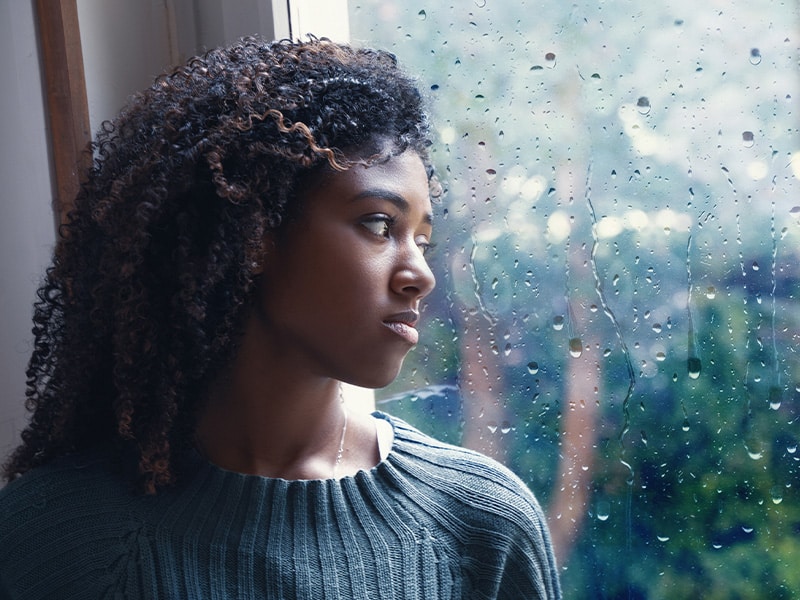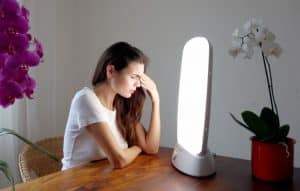Just when you thought the pandemic couldn’t be a bigger bummer, fall arrives and the days get dark and gloomy. It’s the season of SAD, or seasonal affective disorder.
Seasonal affective disorder is a low-grade depression often linked to getting less sunlight — and the nourishing Vitamin D it provides — during the fall and winter months.
“For most people, SAD starts in the fall and typically gets worse in January and February,” says Theresa Murphy, LCSW, Director of Behavioral Health for the Methodist Family Medicine Residency Program.
About 1 in 20 people are estimated to suffer from seasonal depression, but up to 1 in 5 may be dealing with a milder form of SAD. Women are about four times as likely to suffer from seasonal depression.

PANDEMIC ADDS TO GLOOMY MOODS
Although Murphy says seasonal depression can also crop up during spring and summer, most SAD sufferers find relief when the weather warms and they can get their daily dose of daylight again.
This year, however, the pandemic struck in the spring and put a unique damper on just about everyone’s spirits. It also forced many of us to take shelter indoors, potentially prolonging the effects of SAD.
Those effects typically involve a few key symptoms:
- Depression: People with SAD report feelings of depression most of the day, nearly every day. This can lead to feelings of hopelessness, guilt, and anxiety.
- Oversleeping: The time change throws off our bodies’ circadian rhythm and makes getting out of bed that much harder each morning.
- Tiredness or low energy: You’d think sleeping in would be refreshing, but not for those suffering from SAD, which leaves them feeling sluggish and drained.
- Appetite changes: When we’re sad, we often turn to foods high in carbohydrates, the sort of comfort foods that boost serotonin levels in the brain.
- Weight gain: Emotional eating and dietary changes inevitably lead to weight gain and can compound those hopeless feelings.
Most people with SAD suffer in silence, waiting to seek help until their symptoms are too bad for them or those around them to ignore.
“Anytime you see a change in your mood, it’s a good idea to bring it up to your primary care doctor,” says Murphy. “There are ways to treat SAD, but they’re more effective the sooner you seek help.”
If your symptoms are less severe, here are some lifestyle changes recommended by health professionals.
LIGHTEN UP YOUR ENVIRONMENT
Do your best to make your environment sunnier and bright. Open up the curtains and blinds to allow as much natural light into your space as possible.
Try adding colorful flowers and bright-colored decorations throughout your home or office space to give it more life.
Go for a walk to soak up as much sun as you can. Try to get a minimum of 10 minutes of sun per session, when the weather cooperates.
But on those gloomy days when the sun is nowhere to be found, there’s a way to get more light by artificial means: a light therapy box.
“Sit in front of the light box for about 20 minutes, but don’t stare directly into it,” says Murphy.
These inexpensive lights, widely available online, can boost brain chemicals linked to mood and sleep. Try using one as a bedside alarm, waking you with light rather than sound, or simply set aside time each day to soak up some LED rays.
“It’s best to do it first thing in the morning to keep up with your circadian rhythm to help readjust your biological clock,” says Murphy.

HOW YOUR DIET CAN HELP
Remember that food and mood go hand in hand.
“We should all be cognizant about our diet, especially for our mood,” Murphy says.
Swap out processed foods and simple carbohydrates (i.e., sugar) for more complex carbs like whole grains, nuts, beans, fruits, and vegetables. These carbs can help reduce anxiety and increase serotonin levels in the brain, the “happy hormone” that makes you feel better.
Murphy suggests keeping a food diary to take inventory of what you’re eating each day. If you’re having trouble sleeping, be especially aware of how much caffeine you’re consuming.
Who doesn’t love a good pumpkin spice latte when the leaves start turning brown? But beware: Studies show that too much java worsens anxiety. So try not to exceed two cups a day.

THERAPY AND MEDICATION
When all else fails and your mood continues to worsen, it’s time to see a doctor. Your primary care physician may prescribe a medication or recommend you see a psychologist or psychiatrist.
“Some people really benefit from going to therapy for their seasonal affective disorder,” says Murphy. “And some people benefit from antidepressants. It’s always wise to bring up any issue to your doctor so they can provide the best solutions for you.”
FRIENDS OR FAMILY WITH SAD
One of the most helpful things you can do for someone battling SAD is to show them that you are genuinely there for them.
If you notice a close friend or family member is acting depressed or withdrawn, try to approach them from a sympathetic standpoint, rather than a place of judgment.
“When someone you know is showing a decline in their moods, sometimes they can simply use a cheerleader,” says Murphy.
Avoid telling your loved one what they “need” to do, and instead help them become aware of their own mood and what might be causing it. Share a credible article about SAD that helps them recognize the symptoms and suggests remedies.
But when self-help treatments don’t improve their mood, it might be time for them to consider seeking some professional help.
“They might just need someone to say, ‘I’m here for you,” Murphy says.



